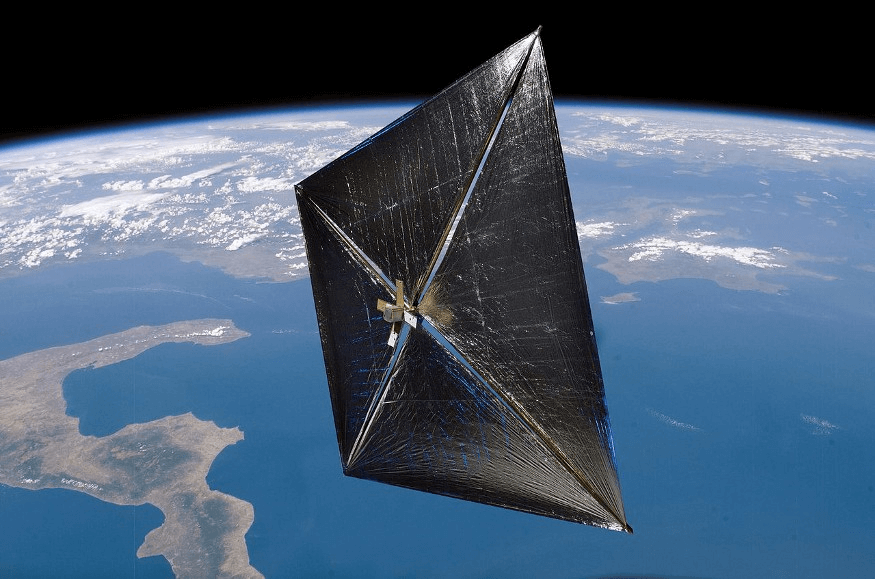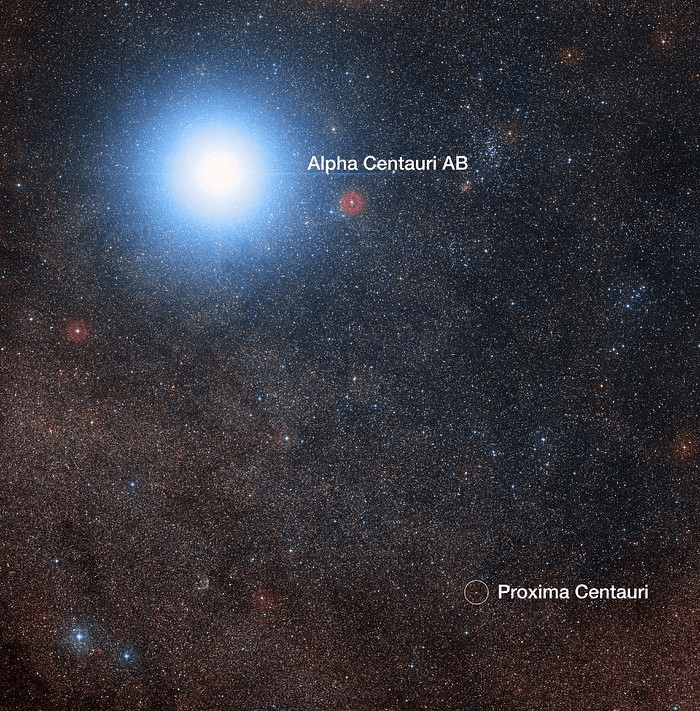今日推荐开源项目:《Chinese-programmer-wrong-pronunciation》
今日推荐英文原文:《Will We Ever Touch The Stars?》

今日推荐开源项目:《Chinese-programmer-wrong-pronunciation》传送门:项目链接
推荐理由:该项目致力于纠正程序员常见的的错误发音,以避免可能的交流障碍和短暂的尴尬。
今日推荐英文原文:《Will We Ever Touch The Stars?》作者:Alastair Isaacs
原文链接:https://medium.com/predict/will-we-ever-touch-the-stars-d1af1035ec8b
推荐理由:半人马座α星可能是最受地球人偏爱的星系,毕竟它距离我们仅有4.24光年。本文从经典的火箭-燃料的矛盾出发,介绍了一种可能到达的方式:利用太阳光的动量驱动探测器。
Will We Ever Touch The Stars?
Space is big, really big. Even the closest stars are unimaginably far away. Alpha Centauri — the Sun’s nearest neighbour — is so distant that light itself takes more than four years to cover the distance. And that’s just the closest one— most of the stars you see in the night sky are hundreds of times further away.Could we ever cross these vast distances? Could a man, or woman, ever walk on a world around another Sun? To do so we’ll either need to spend centuries or even millennia en route, or find a way to go really, really fast.
To date, humans have only travelled to our closest cosmic neighbour, the Moon. That journey, a paltry 240,000 miles (380,000 km), took the Apollo astronauts just over three days, averaging three thousand miles per hour. At that speed, assuming our plucky astronauts can tolerate the cramped living conditions, it would take almost a million years to reach Alpha Centauri.¹

(The Saturn V, the most powerful rocket ever built, lifts off from the Kennedy Space Center. Image credit: NASA.)The Apollo programme used the biggest rocket ever constructed, the Saturn V, burning more than 40,000 pounds of fuel every second. But, even with all that power, we are still nowhere near reaching the stars. More than fifty years have now passed since the Moon landings. Surely modern technology can do better?
Indeed it can, but not by much. Since the 1970s humanity has launched five probes to the outer solar system. Having completed their primary missions, those five spacecraft are now heading for interstellar space. The fastest, Voyager I, travels ten miles every second — a blistering 38,000mph. If Voyager I were heading directly towards Alpha Centauri, it could reach the star system in slightly less than 80,000 years².
It is an improvement over Apollo, but a journey time measured in millennia isn’t much good if we want to get something useful from the trip. To reach the stars in a shorter time we’ll need a way of travelling at a decent fraction of the speed of light — somewhere between a tenth and a fifth. At that speed a hypothetical probe could get to the closest stars in forty to eighty years. Certainly not a short trip, but short enough to complete in a single lifetime.
Can it be done? Scientists and engineers think it probably can, but to do so will require rethinking our entire approach to space exploration. We’ll need new and exotic technologies, and propulsion systems of immense power. Most of all, we’ll need a lot of money.
Until now, most space flights have followed the same approach. Build a big rocket, stick a probe or capsule on top, and light the fuse. Rockets work by burning chemical fuels — similar to the way an internal combustion engine powers a car. This delivers a powerful jolt of momentum to the spacecraft, directing it towards a planet or moon. Once underway, small course corrections can be made with thrusters using various types of gas.
This approach works reasonably well for nearby objects, but, as we already saw, it is far too slow to cross the vast interstellar distances. Rocket engineers have started experimenting and dreaming of alternative fuel sources — from electric propulsion, to nuclear powered rockets, and even antimatter fueled engines.
All these techniques suffer from one big problem — they need the rocket to carry a lot of fuel, and that adds a lot of weight. The more weight you add, the more fuel you need to propel yourself to high speeds. Rocket designers quickly get stuck in a vicious loop, adding more and more fuel to gain slightly more speed.
To go really, really fast, we need to leave the fuel behind. Luckily, engineers have come up with one approach to space travel that does just that. The idea is to harness the power of sunlight. That might seem fantastical. How can light move a spacecraft at all, let alone accelerate it to hundreds of thousands of miles per hour? And yet, since the Victorian Era, scientists have known that light can indeed move objects, if only very slowly.
Those Victorian physicists discovered that light, although massless, carries a small amount of momentum. Every time a photon of light strikes a surface and bounces off, it exerts a tiny force on the surface. Place a mirror in space then, and the cumulative pressure of the Sun’s light will slowly push it away from the star.
The effect is tiny, but is significant enough that mission designers have to take it into account when planning orbits for spacecraft. If they didn’t, reaching the planets would be impossible. Without accounting for sunlight, a typical spacecraft heading to Mars would be more than 15,000 miles off course by the time it arrived.

(An artists concept of NanoSail-D, an experimental solar sail launched in 2011. Image credit: NASA.)To reach the stars in a short enough time, we’ll need a way to magnify the power of sunlight. The most obvious way to do that is to use a bigger mirror — known as a solar sail. A spacecraft powered by a solar sail needs no fuel, reducing its weight, and experiences a small but steady acceleration away from the Sun. What’s more, that acceleration will gradually reverse as the probe nears its destination star, helping to slow the probe for arrival.
How quickly can a solar sail reach Alpha Centauri? Using sunlight alone, and a large sail the size of several football fields, some scientists have estimated it would take a few thousand years. That’s a big improvement on current methods, but still not within a human lifespan.
To get faster, scientists have suggested using focused lasers to power the solar sail. A powerful laser, aimed at the sail from Earth, would increase the acceleration many times over, cutting the journey time to no more than a century. Add in miniaturisation — allowing ever smaller and lighter probes, and recent studies think we could reach Alpha Centauri in a few decades.
These ideas might seem farfetched, but some at least are taking them seriously. The most ambitious attempt is Project Starshot, funded by the Russian billionaire Yuri Milner. He is pouring money into solar sail, laser and miniaturisation research. His goal is to send probes to Alpha Centauri and other nearby stars within the next few decades.
To reach Alpha Centauri, Project Starshot has suggested constructing a fleet of tiny spacecraft, each powered by a solar sail. An array of powerful Earth-based lasers, each using the power consumption of a small city, will accelerate the probes to a fifth of the speed of light. Such speeds carry enormous dangers — even a collision with a grain of dust would be devastating — but Project Starshot think enough would survive to reach our neighbour.

(Alpha Centauri, our neighbouring star system, is composed of three orbiting stars. Two are visible in this image. Recent discoveries indicate that at least two planets are present in the star system. Image credit: Digitized Sky Survey 2, Davide De Martin/Mahdi Zamani)Although it has the financial backing of a billionaire, Project Starshot is facing enormous odds. The most formidable challenges lie in the lasers. Can we even construct one so powerful? How do we prevent the solar sails from melting under such intense radiation? And what happens if those lasers fall into the wrong hands? Such a device would not just serve as a propulsion device; it could also act as a terrible weapon.
But even if Yuri Milner and Project Starshot fail to reach the stars, their ideas could bring benefits closer to home. Right now reaching the outer planets takes decades and costs billions of dollars. Breakthroughs in solar sail technology could reduce that travel time significantly, and trends in miniaturisation offer to make space exploration far cheaper.
In the end, we may not be ready for interstellar travel just yet. But surely, if we keep dreaming of the stars, it won’t be long until we reach out and touch them.
¹A million years is probably wrong. The stars are not stationary, they move around. Over a few tens of thousands of years the Sun and Alpha Centauri will drift apart. By the time a million years has passed, our intrepid astronauts will likely be lost in deep space, desperately hoping to pass close by an hospitable star.
²Voyager I, and the other probes heading into deep space, did not achieve their high speeds from rockets alone. They also took advantage of gravitational interactions with planets. In each interaction the planet boosts the speed of the spacecraft. In exchange, the planet slows ever so slightly.
下载开源日报APP:https://openingsource.org/2579/
加入我们:https://openingsource.org/about/join/
关注我们:https://openingsource.org/about/love/
